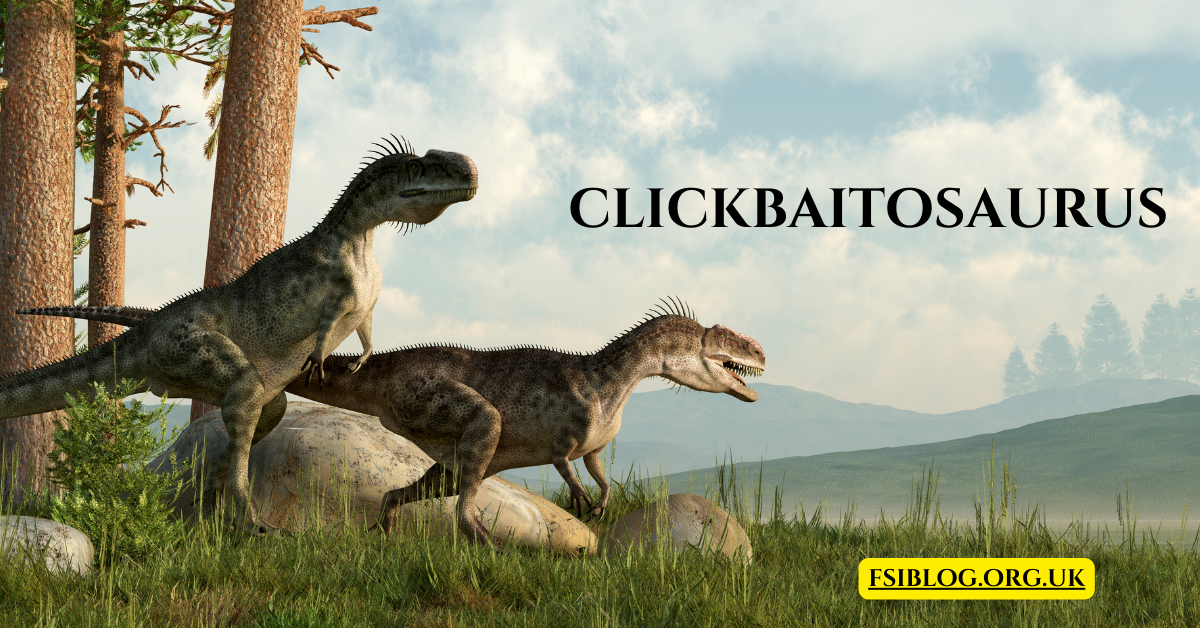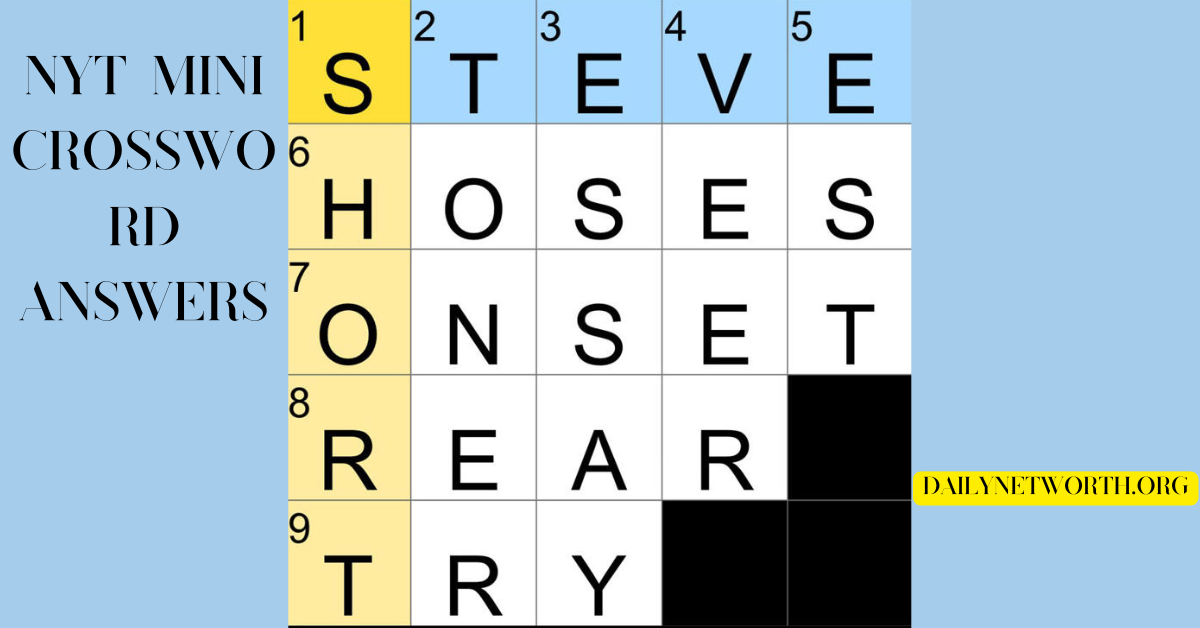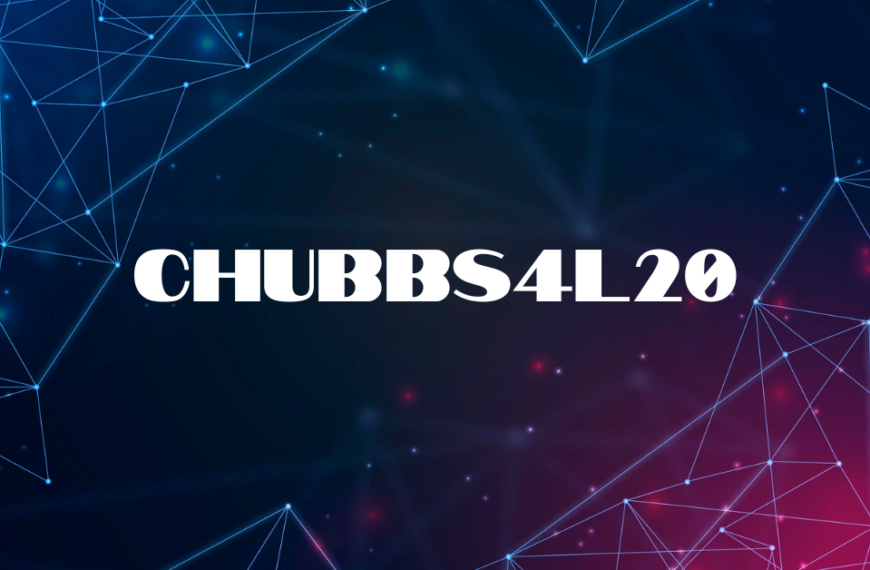In today’s digital landscape, grabbing attention is more crucial than ever. With countless articles competing for clicks, it’s all too easy to fall into the trap of Clickbaitosaurus. You know the type: sensational headlines promising shocking revelations or life-altering secrets that rarely deliver on their bold promises. While enticing titles can drive traffic and spark curiosity, they often cross a line into deceitful territory. But what happens when your content becomes nothing more than a “Clickbaitosaurus”? It’s like being chased by an oversized dinosaur—thrilling at first but ultimately unsustainable and damaging in the long run.
What is Clickbait?
Clickbait refers to sensationalized headlines and images designed to attract attention. These catchy phrases often promise shocking revelations, exclusive content, or life-changing advice. The goal is simple: get users to click through to a website or article. The allure can be irresistible—a tantalizing peek into something intriguing just out of reach. However, the substance behind these eye-catching titles varies widely. While some deliver genuine value, others fall short of expectations—leaving readers feeling misled. This tactic thrives on curiosity and urgency, compelling individuals to satisfy their desire for information. As we scroll through social media feeds flooded with colorful graphics and exaggerated claims, it’s clear that clickbait has become a dominant force in online engagement.
The Rise of the Clickbaitosaurus
Early Beginnings of Clickbait
Clickbait started as simple, catchy headlines used by websites to draw in curious readers. Initially, these headlines seemed harmless enough, offering interesting content for audiences. However, as competition for attention increased, headlines became more extreme, giving birth to the “Clickbaitosaurus” – the exaggerated form of clickbait we see today.
Evolution to the Clickbaitosaurus
The shift toward more aggressive clickbait tactics was driven by the rise of social media platforms and the monetization of online content. Platforms like Facebook and Twitter amplified the spread of attention-grabbing headlines, while websites sought ways to maximize their revenue by increasing page views. This encouraged sensationalism, leading to the rise of the “Clickbaitosaurus” — content that prioritizes clicks over substance.
How Does Clickbait Work?
Clickbait operates on the principle of curiosity and emotion. By tapping into human psychology, it triggers responses that compel people to click, often using tactics such as:
- Curiosity Gap: The headline hints at information but leaves out enough details to make readers curious.
- Emotional Appeal: Headlines designed to evoke strong emotions such as anger, surprise, or fear.
- Exaggeration: Overhyping the content to make it seem more sensational than it really is.
- Ambiguity: Using vague language to intrigue readers, forcing them to click for clarification.
Once a user clicks on the headline, they are often led to content that may be underwhelming, irrelevant, or misleading. This can lead to frustration among users and erosion of trust in the content source.
Signs your content may be clickbait
One clear sign your content might be a clickbaitosaurus is when the headline promises something outrageous. If it sounds too good to be true, it probably is. Another indicator? When the actual content doesn’t match the title’s hype. Readers feel misled if they expect shocking revelations but get fluff instead. Watch for exaggerated language and all-caps phrases that scream for attention. This tactic may grab clicks initially, but it can damage trust over time. If you find yourself using sensationalism regularly, take a step back. Consistently resorting to hyperbole diminishes your credibility.
The Psychology Behind Clickbait
Clickbait thrives on human psychology. It taps into our innate curiosity and desire for instant gratification. Headlines that promise shocking revelations or secret information lure readers in, triggering an irresistible urge to click. This tactic exploits the brain’s reward system. When we click on something intriguing, dopamine is released, making us feel good. It’s a mini-celebration with every successful find—an emotional high that keeps us coming back for more. Fear of missing out (FOMO) plays a significant role too. Phrases like “You won’t believe what happened next” create urgency and anticipation, compelling users to engage without hesitation. Moreover, social validation matters greatly in this digital age. Content that garners likes and shares seems more appealing. Clickbait becomes a stamp of approval from peers—a signal that it’s worth engaging with.
The Dark Side of Clickbaitosaurus
Erosion of Trust
Clickbait may initially attract clicks, but over time, it damages the credibility of content creators and websites. Readers who feel deceived by sensational headlines quickly lose trust in the platform, which can lead to long-term damage to the brand’s reputation.
Misleading Information
Clickbait often contributes to the spread of misinformation. When headlines are misleading or exaggerated, readers may form incorrect conclusions without thoroughly engaging with the content. In extreme cases, clickbait can fuel the spread of false news or harmful ideologies.
Reader Fatigue
Excessive exposure to clickbait can lead to reader fatigue. Users become desensitized to sensational headlines, leading to a decrease in engagement with content. Additionally, users may start avoiding certain websites or social media platforms that frequently use clickbait, negatively impacting those businesses in the long run.
Read More: rockford mesothelioma lawyer vimeo
The Impact of Clickbait on Online Media
Clickbait has drastically altered the landscape of online media. It’s a tool many publishers wield to increase web traffic and boost ad revenue, but it comes at a cost Readers often feel misled after clicking on sensational headlines that don’t deliver on their promises. This creates a cycle of distrust between audiences and content creators. Engagement may spike in the short term, but long-term loyalty suffers. Moreover, as clickbait proliferates, quality journalism is pushed aside. In-depth reporting takes time and effort—the opposite of what clickbait thrives on. Instead of valuable insights, audiences are bombarded with shallow content that prioritizes clicks over substance.
Tips for creating valuable content without resorting to Clickbaitosaurus
Creating valuable content starts with understanding your audience. Research their interests and pain points. This knowledge will guide you in crafting relevant topics that truly resonate. Focus on providing solutions or insights rather than just generating buzz. Use data, case studies, or expert opinions to support your claims. Authenticity builds trust and keeps readers coming back. Craft headlines that are clear and informative. Instead of exaggerating, aim for accuracy which reflects the true essence of your content. Engage readers through storytelling. A compelling narrative can captivate without misleading them into clicking based on hype alone. Encourage interaction by asking questions or inviting comments at the end of your posts. This fosters a sense of community around your content, making it more valuable in the long run.
How to Spot and Avoid Clickbait
Spotting clickbait is crucial for navigating the online landscape. The first red flag? Sensationalized headlines that promise too much. If it sounds outrageous or unbelievable, proceed with caution. Another telltale sign is vague language. Clickbait often leaves out essential details to lure you in without offering real value. Instead of clarity, expect intrigue wrapped in ambiguity. Look for emotional triggers as well. Headlines designed to provoke outrage or fear are classic tactics used by the clickbaitosaurus. Also, check the source’s credibility. Reputable sites prioritize quality content over flashy headlines. If a headline seems more like a screaming tabloid than informative journalism, it’s likely clickbait.
The Future of Clickbaitosaurus
The future of clickbait depends largely on user behavior and platform regulations. Social media platforms and search engines are working to curb the impact of clickbait by prioritizing high-quality, informative content. In the long term, audiences may develop stronger resistance to clickbait tactics, encouraging a shift back to more honest and valuable content.
FAQs
What is clickbait, and why is it used?
Clickbait refers to sensationalized headlines designed to attract clicks. It is used to drive web traffic, increase ad revenue, and boost engagement.
How can I tell if a headline is clickbait?
Look for exaggerated claims, emotional triggers, and vague wording. If it seems too shocking or misleading, it’s likely clickbait.
Does clickbait always mean false information?
Not always. Some clickbait leads to valuable content, but many headlines overpromise and underdeliver, misleading readers.
How does clickbait affect online media?
Clickbait can erode trust, spread misinformation, and prioritize engagement over quality journalism, leading to reader fatigue.
What’s the best way to avoid using clickbait?
Focus on accuracy, provide real value, and create compelling but honest headlines that reflect the actual content.
In Short
Clickbait may drive quick clicks, but its long-term impact is damaging, eroding trust and spreading misinformation. To create lasting value, focus on authenticity, accuracy, and meaningful content. Engaging headlines should attract readers without misleading them. The future of digital media depends on prioritizing quality over sensationalism.
Stay Connected With Us: fsiblog.org.uk

















